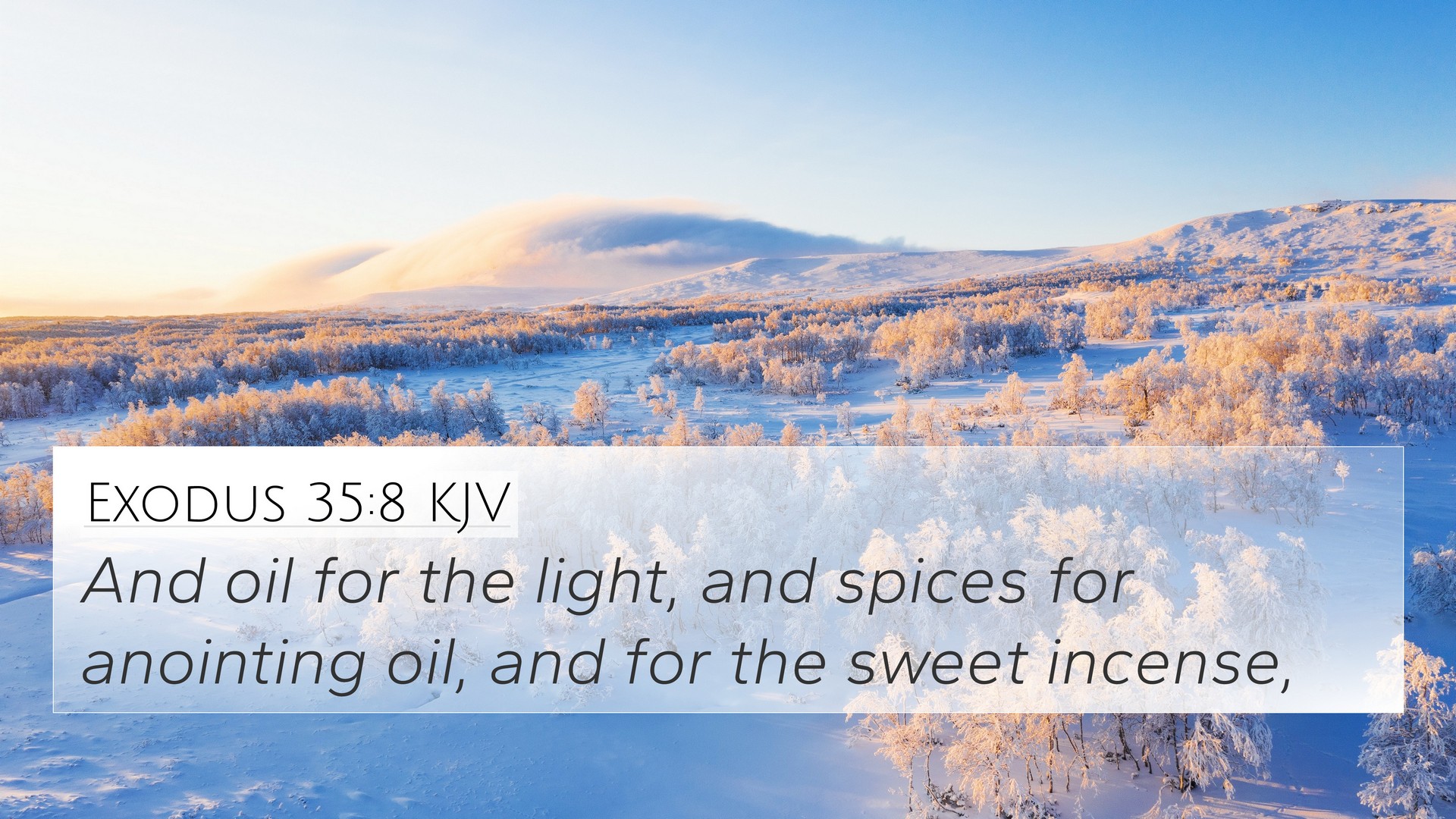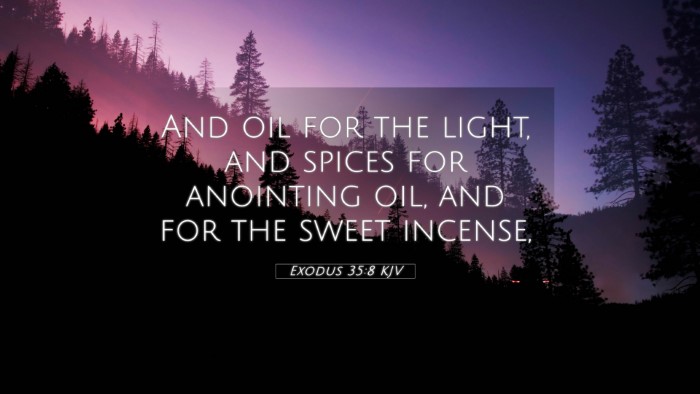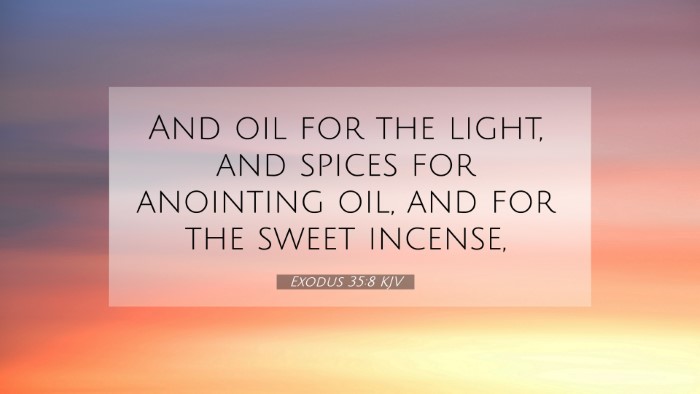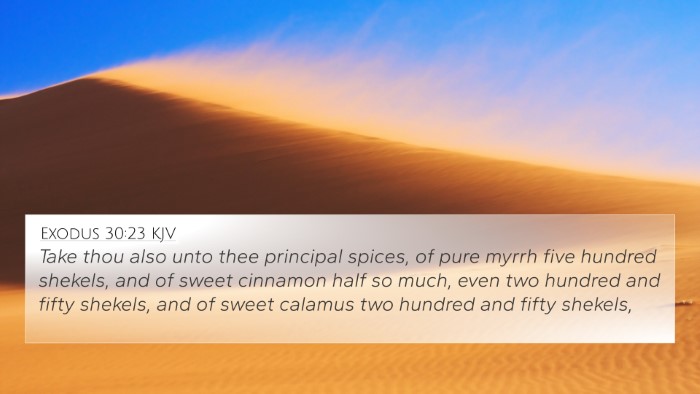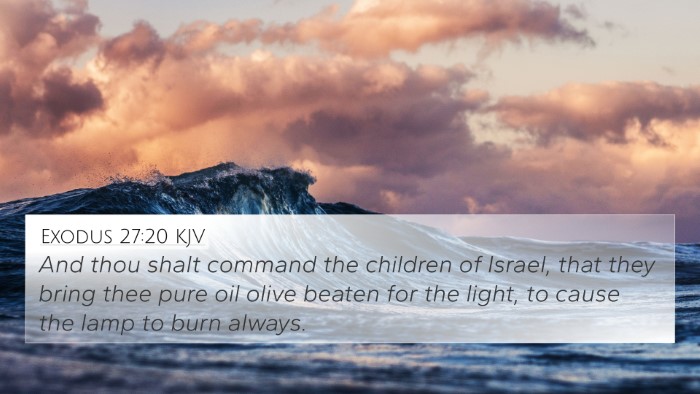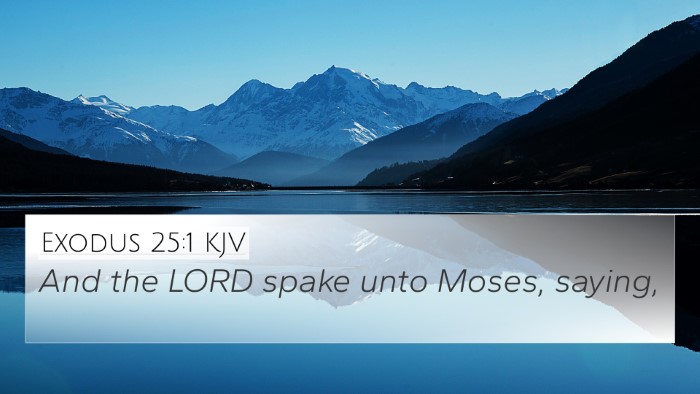Understanding Exodus 35:8
Exodus 35:8 states: "And oil for the light, and spices for anointing oil, and for the sweet incense." This verse is situated within the context of the contributions made for the construction of the Tabernacle. The significance of items like oil and spices reflects deeper theological themes relating to worship and preparation for the presence of God.
Contextual Significance
The verse is part of a larger narrative where God instructs Moses to gather materials for the Tabernacle, a sacred space where God's presence would dwell among the Israelites. The materials mentioned, specifically oil and spices, hold both practical and symbolic meanings.
Insights from Public Domain Commentaries
- Matthew Henry: He emphasizes the importance of the oil for the lamps, symbolizing divine illumination and the presence of the Holy Spirit. Henry notes that the people were called to contribute voluntarily, highlighting a community effort in worship.
- Albert Barnes: Barnes underscores the significance of anointing oil, suggesting it represents consecration and sanctification. He ties this back to the priestly traditions that would emerge, wherein anointing signifies a setting apart for God’s holy purposes.
- Adam Clarke: Clarke provides additional insights into the practical uses of the spices in creating incense. He links the use of incense to prayer and the worship of God, connecting it to New Testament descriptions of the prayers of the saints rising before God.
Thematic Connections
Exodus 35:8 links to several broader biblical themes such as:
- Worship: The careful preparation and offering of materials indicate the seriousness of approaching God.
- Community Contribution: The verse exemplifies how communal efforts shape worship practices.
- Divine Presence: The oil for the light signifies the importance of God's guidance and illumination in the lives of His people.
Bible Cross-References
Exodus 35:8 relates to numerous other verses throughout the Bible:
- Exodus 27:20-21: Discusses the command to bring oil for the lamp and its significance in keeping the lamps burning.
- Leviticus 24:2: The charge to bring pure oil for the light, reinforcing the importance of proper worship.
- 1 Samuel 16:13: Highlights the significance of anointing oil, which Samuel used to consecrate David, connecting to God's chosen leaders.
- 2 Corinthians 1:21-22: Paul discusses how God anoints and seals believers, connecting New Testament themes of anointing to the Old Testament practices.
- Revelation 5:8: Represents the prayers of the saints as incense before God, establishing a connection between worship and prayerful offerings.
- Matthew 25:1-13: The parable of the ten virgins emphasizes the need for oil, paralleling the necessity of being prepared for Christ’s return.
- Isaiah 61:1: The anointing of the Messiah, connecting to the theme of divine appointment and mission.
- Hebrews 9:2-4: Describes items in the Tabernacle, including the incense altar, connecting the Old Covenant practices with the New Covenant significance.
- Philippians 4:18: Speaks about offerings and gifts, linking to the idea of sacrificial giving in worship.
- Psalm 141:2: Indicates that prayers can be likened to incense, forming a strong thematic bridge between prayer and worship.
Conclusion
In summary, Exodus 35:8 provides a rich tapestry of meaning that touches on themes of worship, communal participation, and divine presence. The insights from public domain commentaries illuminate the importance of the elements mentioned, while the cross-references strengthen our understanding of their significance throughout scripture. This verse not only connects with the materials required for the Tabernacle but also sets a precedent for how believers can approach God in worship and service.
